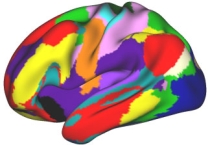With nearly $290M of new funding for seven years to research institutions around the country, the National Institutes of Health renewed its commitment to the Adolescent Brain Cognitive Development (ABCD) Study, the largest long-term study of brain development and child health ever conducted in the United States.
Launched in 2015, ABCD is following 11,750 children, including 2,100 who are twins or triplets, for at least 10 years starting at ages 9 to10. The new awards continue funding for a Coordinating Center and Data Analysis Informatics & Resource Center at the University of California, San Diego, as well as the research project sites where children are assessed.
“The next phase of the ABCD study will help us understand the effects of substance use, as well as environmental, social, genetic, and other biological factors on the developing adolescent brain,” said NIDA Director Nora D. Volkow, M.D. “Since the participants are now in their vulnerable middle school years or are beginning high school, this is a critical time to learn more about what enhances or disrupts a young person’s life trajectory.”
Scientists are documenting exposures to drugs (including nicotine, alcohol, and marijuana), screen time activities, sleep patterns, engagement in sports and arts, among other variables, that may affect brain development, cognitive skills, mental health, and many other outcomes. The young participants undergo interviews and behavioral assessments once or twice a year, with physiological measures (e.g., blood pressure, cholesterol) of cardiovascular health and neuroimaging of brain structure and function every two years.
While the project is designed to answer long-held questions about the development of the teenage brain through the entire period of adolescence and beyond, the study has already released two sets of anonymized high-quality baseline data to the broader research community via the National Institute of Mental Health Data Archive to enable both ABCD investigators and non-ABCD researchers to pursue their own research questions. The data—so far more than 140 terabytes—include basic participant demographics, assessments of physical and mental health, substance use, culture and environment, and neurocognition, tabulated structural and functional neuroimaging data, and minimally processed brain images. The comprehensive dataset, which is disaggregated by sex, racial/ethnic group, and socioeconomic status, allows researchers to address numerous questions that may ultimately inform health decisions and policies related to education, nutrition, physical activity, sleep, and prevention of substance use and mental illness.
So far, 32 research papers have been published using these data, with 11 from investigators not involved in the ABCD study. These analyses have led to a better understanding of the association between certain traits and experiences in adolescence (e.g., sleep, body mass index, family conflict, screen time) and brain physiology and other outcomes, such as cognitive ability and mental illness (e.g., depression and suicide). While most of these research projects have only looked at associations at a single point in time, data that will be collected over time will allow scientists to examine the developmental trajectories of individuals and how they are affected by many of the factors mentioned above—including genetics.
Additional data will be released this summer that includes the six month and one-year follow up for the full cohort and other interim data. The data will be made available through the National Institute of Mental Health (NIMH) Data Archive, which can be accessed by researchers who obtain a free NIMH Data Archive account.
The ABCD Study, like many other research projects, is adapting to the restrictions necessary to address COVID-19. Scientists will conduct virtual assessments as long as needed so that valuable data will not be lost, and participant health and safety will be ensured. It is crucial that researchers stay in contact with ABCD families throughout this period and resume comprehensive data collection when it is over to understand the factors that influence long-term developmental trajectories.
Information about the ABCD Study and the study sites can be found online. The ABCD Study was initiated by the Collaborative Research on Addiction at NIH (CRAN), a consortium of institutes that include a focus on addiction research. CRAN comprises NIDA, the National Institute on Alcohol Abuse and Alcoholism and the National Cancer Institute. Other NIH collaborators in this project are the Eunice Kennedy Shriver National Institute of Child Health and Human Development, the National Institute of Mental Health, the National Institute on Minority Health and Health Disparities, the National Institute of Neurological Disorders and Stroke; the National Heart, Lung, and Blood Institute, the NIH Office of Behavioral and Social Sciences Research, the NIH Office of Research on Women’s Health, and the Division of Adolescent and School Health at the Centers for Disease Control and Prevention (CDC), with additional partnerships with the National Institute of Justice, the CDC Division of Violence Prevention, the National Science Foundation, and the National Endowment for the Arts.
NIDA Press Office
301-443-6245
media@nida.nih.gov
About the National Institute on Drug Abuse (NIDA): NIDA is a component of the National Institutes of Health, U.S. Department of Health and Human Services. NIDA supports most of the world’s research on the health aspects of drug use and addiction. The Institute carries out a large variety of programs to inform policy, improve practice, and advance addiction science. For more information about NIDA and its programs, visit www.nida.nih.gov.
About the National Institutes of Health (NIH): NIH, the nation’s medical research agency, includes 27 Institutes and Centers and is a component of the U.S. Department of Health and Human Services. NIH is the primary federal agency conducting and supporting basic, clinical, and translational medical research, and is investigating the causes, treatments, and cures for both common and rare diseases. For more information about NIH and its programs, visit www.nih.gov.
NIH…Turning Discovery Into Health®

